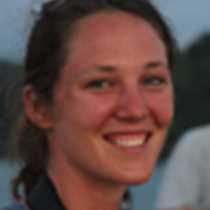Isla San Esteban and Isla Rasa
It was a beautiful daybreak in Baja California Sur as the National Geographic Sea Bird anchored off the eastern shore of Isla San Esteban in the Sea of Cortez. We spent the morning ashore at the former home of the Seri Indians, searching for the endemic reptile species of pinto chuckwallas and spiny-tailed lizards. Along the shore where we landed, there were a dozen or so yellow-footed gulls that were nesting among the pebbles and rocks. We had to be careful not to disturb them as we picked our way over the stony path, lest they leave their nests and eggs, which would quickly bake in the hot sun.
The sun was still warming up the cool rocks and boulders that the lizards like to lay on when we arrived, but it wasn’t long before we saw some emerge from their lairs to bask in the morning rays. The spiny-tailed lizards are grey in color and like to feed on cordon cactus flowers. We were lucky enough to see several of the reptiles perched atop tall, thorny, cordon columns breakfasting on yellow cactus blossoms. We also spied a few pinto chuckwallas as well, which are more mottled orange in color and also feed on the flowers and fruits of cacti. The ones we saw were still warming up from their night’s rest and not yet ready for much activity.
In the afternoon, after sailing several hours north of Isla San Esteban, we arrived at the famous island of Isla Rasa, renowned for its incredible bird life. Covering only 142 acres, it is the breeding ground for about 95% of the world’s population of both Herrmann’s gulls and elegant terns. After almost being destroyed by guano harvesters and poachers in the early 1900s, the population of the birds was revived when, in 1964, the Mexican government declared Isla Rasa a sanctuary. Today, the population of these birds has grown to over half a million individuals and researchers have conducted a number of studies on their behaviors and migratory patterns. We spent the afternoon exploring the shoreline of Isla Rasa by Zodiac as well as walking among the bird colonies and visiting the research station on the island. It’s always incredibly impressive to see so many thousands of birds in one place!
For dinner, the galley prepared us a Mexican feast complete with local fish, chicken mole, stuffed poblano peppers, tortillas, and rice and beans. The dining room was decorated in festive colors and ornaments and after dinner we were all entertained by a hilarious comedy act by one of our guests!




